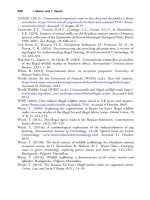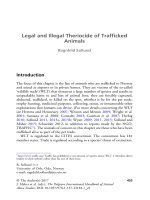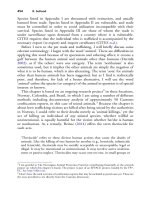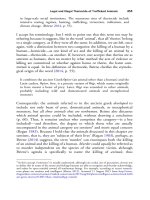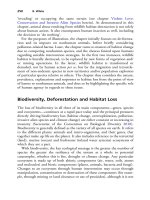The palgrave international handbook of a 253
Bạn đang xem bản rút gọn của tài liệu. Xem và tải ngay bản đầy đủ của tài liệu tại đây (35.93 KB, 1 trang )
Animal Abuse Resulting from Wildlife
Habitat Destruction
Rob White
Introduction
Animal abuse occurs in different forms and takes place in diverse locations. It
is ubiquitous although there are important qualitative differences in regard to
the nature, dynamics and seriousness of the harm as these pertain to particular nonhuman animal species. The focus of this chapter is on the destruction of wildlife habitat and how this impinges upon the health and wellbeing of nonhuman animals. Without a home in which to live or to which to
migrate to, suffering and death is inevitable for nonhuman animals.
Destroying species homelands, therefore, is a profoundly harmful activity
that intrinsically constitutes a form of animal abuse.
In this scenario, humans have a major role to play both as perpetrators of
wildlife habitat destruction and as moral agents with the capacity to intervene
in instances where habitat destruction originates from nonhuman sources.
The issue of who or what, precisely, causes certain habitat damage is an
important consideration in the discussions below. From the point of view of
human causation, matters of power and profit tend to come to the fore in
explanations of wide scale habitat destruction. Human agency is also linked
to decisions about whether or not to intervene to ‘save’ particular species
from the competitive pressures generated by other nonhuman species
R. White (*)
School of Social Sciences, University of Tasmania, Hobart, Tasmania, Australia
e-mail:
© The Author(s) 2017
J. Maher et al. (eds.), The Palgrave International Handbook of Animal
Abuse Studies, DOI 10.1057/978-1-137-43183-7_12
249
